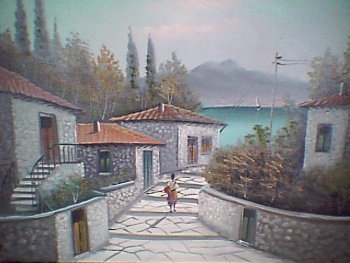About Lesvos
One of the largest islands of the Aegean, it lies near the coast of Asia Minor between Chios and Lemnos, with two deep bays which give it the appearance of a plane tree leaf. First time visitors to this island remark that their impression of it, as it emerges from the deep, blue Aegean, is of sheer beauty.
Silvery beaches, blossoming valleys and forested heights combine with an abundance of radiant sunlight to make this fertile and ancient isle intoxicating. A vast range of vegetation, from the silver olive and the dark green pine, to the simplest wildflower adorn this Hellenic gem. Its natural beauty and extensive history have inspired famed poets over many centuries, from Alcaeus and Terpander of ancient eras, to Palamas, Eftaliotis and Nobel-prize winning Elytis, of more recent times.
Its rich history spans millenia, recorded in passages of Homer's epic poetry and in writings of the famous Roman orator Cicero, up through the Byzantine period and Turkish occupation. Distinguished since antiquity for its cultural development and support of the fine arts, Lesvos has a long tradition of producing fine musicians, poets, artists and writers. Among the many famous artists and scholars nourished by Lesvos are Sappho, Arion, Alcaeus, Terpander, Christophoros, Pachoumios Rousianos, Metropolitans Panaretos, Iakovos, Palaiologos and Kallinikos, Ignatius of Hungaro-Wallachia, Veniamin Kares, Yiorgos Iakoyides, Eleftheriades-Teriade Elytis, the Vernardakes brothers, Eftaliotis, Myrivilis, and Venezis.

About Vatoussa
Settled in the tenth century, Vatoussa is one of five villages whose identity as a traditional village has been protected by law. Visitors immediately notice and admire the architectural features which have earned it protected status. Stone-paved streets and walls hearken back to an earlier era. Impressive stone houses with ceramic-tiled roofs likewise furnish permanent links to the past.
Among the points of interest in the village is the Gogos Mansion. This nineteenth-century neoclassical structure now serves as a small museum for the municipality. Equally noteworthy are two churches, also built during the 1800s. Byzantine and post-Byzantine style images adorn the interior of these three-aisled basilicas. The hand-carved wooden iconostaseis of the main church is of especially fine craftsmanship.
The hillside village boasts a cobbler's shop, two barbershops, two bakeries, three traditional cafes, several stores, restaurants and small pensions -- all still in operation. Vendors arrive daily to sell fresh produce and fish to the villagers in Vatoussa or outlying hamlets of Pterounda, Revma, and Hidira.
Although a number of Vatoussans are skilled tradespeople, there are many prominent scholars who have been born and raised there. Among them are theologians, professors, archbishops, school directors, writers, poets, musicians and movie producers. Vatoussans remain justifiably proud of their heritage and their village and extend a hearty welcome to all who visit their home.
|
|



